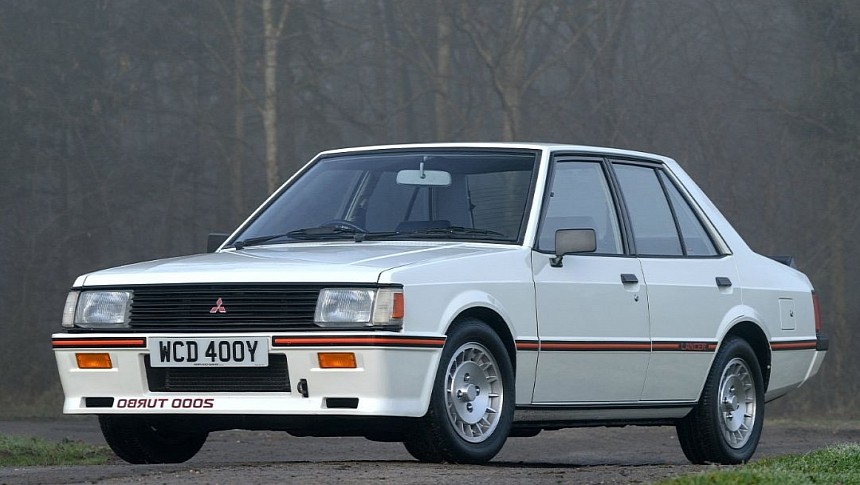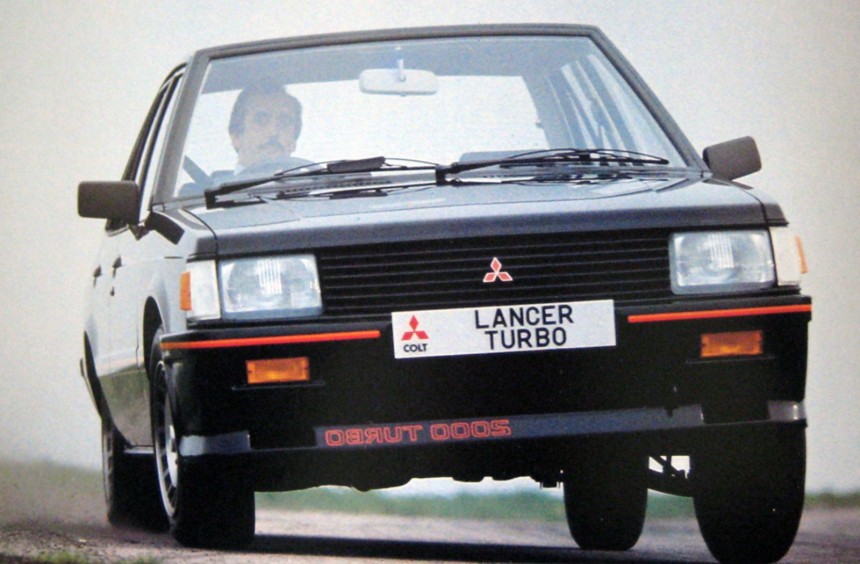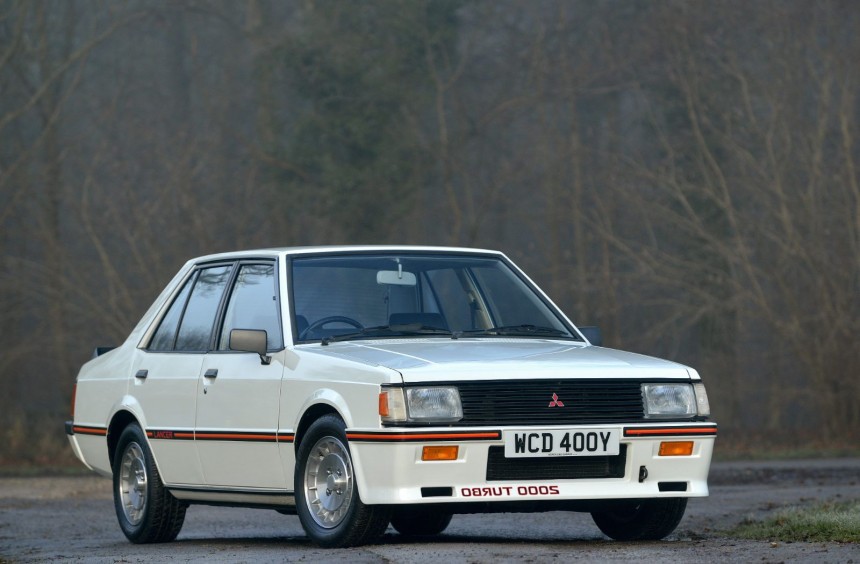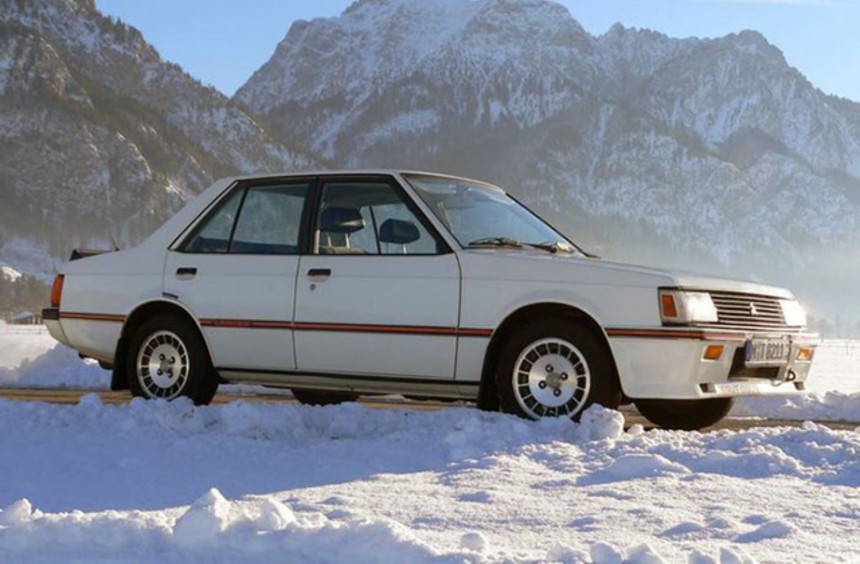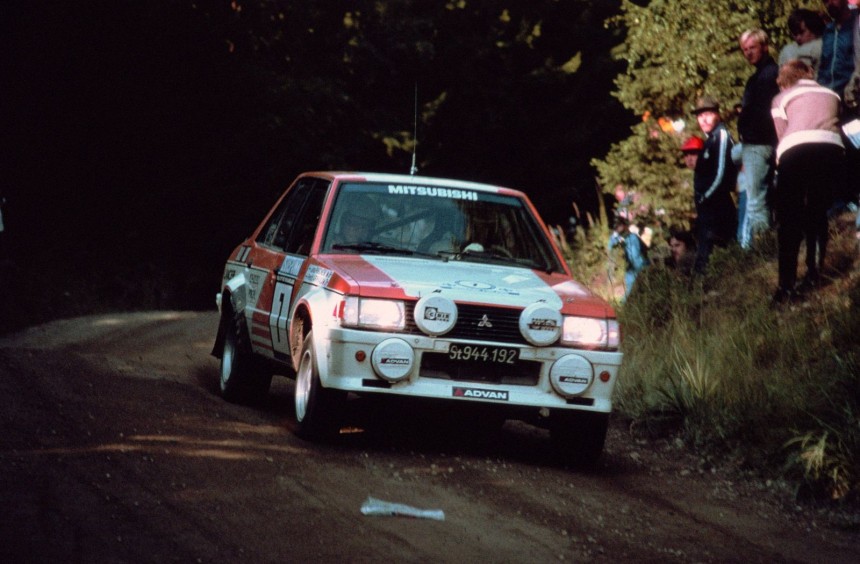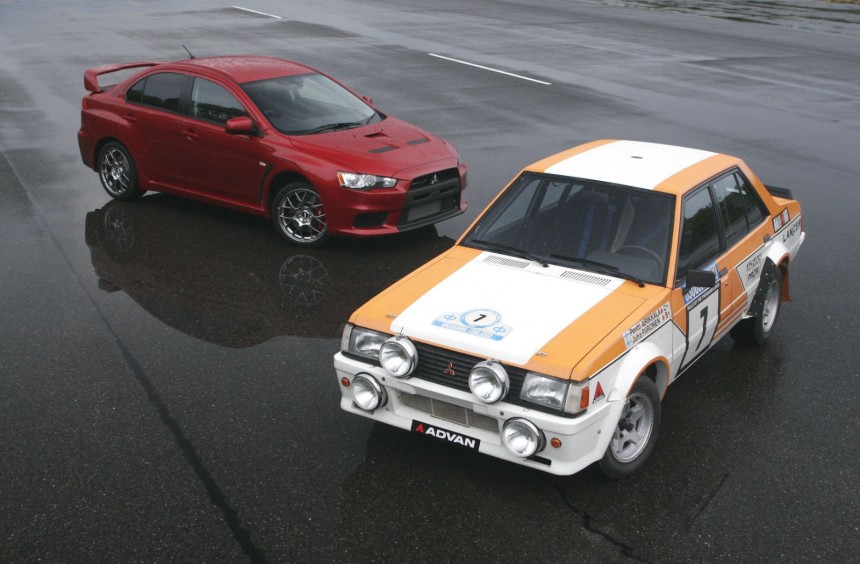Though it looked like a brick-shaped people mover, the EX 2000 Turbo was one of the most potent performance sedans that money could buy at the time of its release.
Today, the Japanese manufacturer's model lineup includes a series of boring SUVs, none of which have anything to do with high-performance. However, a few decades ago, Mitsubishi produced some of the greatest high-performance sedans engineered for rally dominance.
Of course, I'm talking about the ten distinct generations of Lancer-based Evolution models, which, for the most part, were street-legal versions of the brand's World Rally Championship (WRC) contenders.
For most enthusiasts, the Evos and the legendary 4G63T that powered all but the last iteration remain Mitsubishi's greatest products, but many forget the model that introduced both the street-legal, rally-based formula and the mighty turbocharged inline-four.
Long before the first Evo was conceived, and even a few years before the Ralliart division was established, Mitsubishi tried its luck in rally competitions with some success but no silverware to its name.
In 1979, after a three-year hiatus, the Japanese carmaker aimed to change that and eyed a rally title, so its engineers took the plebian Lancer sedan and transformed it into an advanced rally car.
Dubbed EX 2000 Turbo, the prepped rally car debuted at the 1979 Tokyo Motor Show in prototype guise, and two years later, it entered Group 4 rallies.
Unfortunately for Mitsubishi, its plan to develop the RWD car into a WRC winner was cut short by the emergence of Audi's 4WD Quattro.
Nevertheless, the EX 2000 Turbo project spawned a street-legal homologation special that, although forgotten these days, was one of the most impressive four-cylinder-powered sedans on the market in the early 1980s.
Unlike all other versions of the second-generation Lancer, the homologation special - sold only in select European markets - became the first and only second-generation Lancer to receive a 2.0-liter engine borrowed from the larger Galant.
Part of the Sirius engine family introduced in the mid-1970s, the unit codenamed 4G63 featured a bombproof cast-iron block with a bore and stroke of 85 mm × 88 mm (3.35 in × 3.46 in) - a slightly under-square design that favored high torque delivery.
As with the naturally aspirated version, a simple 2-valve-per-cylinder SOHC aluminum head was fitted atop the block. However, the 2000 Turbo's 4G63 was made special by an intercooled turbo, an electronic fuel injection system, and a programmable ECU - all state-of-the-art features for 1981.
In street-legal guise, the engine was limited to 168 hp and 181 lb-ft (245 Nm) of torque, while the rally-spec version could deliver close to 300 hp.
With a DOHC head and continuous revisions, this engine would later power nine out of ten Evo generations, helping the Japanese carmaker win the WRC title and earning its place among the best four-cylinders ever produced.
The road-legal homologation special didn't look threatening when viewed from the outside. Compared to the standard Lancer, it only received a bespoke front bumper with an integrated air dam, new wheels, and a urethane rear spoiler aimed to improve aerodynamics.
Nevertheless, with the 168-hp turbocharged engine under the hood, the 2,205-pound (1,000 kg) Turbo was one of the quickest four-cylinder cars in the world at the time of its release.
It could accelerate from 0 to 60 mph (97 kph) in 6.5 seconds and reach a top speed of 125 mph (201 kph).
Apart from the turbocharged engine and slight body improvements, the homologation special also received ventilated disc brakes all around, studier springs for its independent suspension system, and a limited-slip differential.
In competition spec, the car only participated in a few rallies, with the most notable result being a third-place finish at the 1982 edition of the 1000 Lakes Rally in Finland.
As I mentioned before, the emergence of the Audi Quattro made the RWD 2000 Turbo obsolete before its official debut, as you can see in the YouTube video below by 8ight.
Mitsubishi soon turned its attention to developing a 4WD version of the Starion, then paused its rally involvement to get back to the drawing board.
In the late 1980s, the Japanese brand returned with the Galant VR-4, and from 1993 to 2005, it became a household name in WRC thanks to the Lancer-based Evos.
From 1981 to 1987, Mitsubishi sold around 1,250 units of the Lancer EX 2000 Turbo. The model was never marketed in Japan or the US due to the strict emissions regulations.
Though it was a potent little sedan, the Turbo was quickly overshadowed by the newer Galant VR-4, and, later, the Evo models, so few are still around today, and even fewer can be found in pristine shape.
For those who own one, the car has a sentimental value that can't be converted into money; therefore, you'll rarely see one of these cars listed for sale.
When one does get listed, it usually demands anywhere from $2,000 to $15,000, depending on the state, mileage, and history.
Even if it was more or less a failed rally car, the street-legal EX 2000 Turbo was one of the most potent performance-oriented sedans of the early 1980s. In addition, it's the spiritual forefather of all Lancer Evolution models, and for these two reasons, it deserves to be remembered and praised.
Of course, I'm talking about the ten distinct generations of Lancer-based Evolution models, which, for the most part, were street-legal versions of the brand's World Rally Championship (WRC) contenders.
For most enthusiasts, the Evos and the legendary 4G63T that powered all but the last iteration remain Mitsubishi's greatest products, but many forget the model that introduced both the street-legal, rally-based formula and the mighty turbocharged inline-four.
Born to dominate the world of rallying
In 1979, after a three-year hiatus, the Japanese carmaker aimed to change that and eyed a rally title, so its engineers took the plebian Lancer sedan and transformed it into an advanced rally car.
Dubbed EX 2000 Turbo, the prepped rally car debuted at the 1979 Tokyo Motor Show in prototype guise, and two years later, it entered Group 4 rallies.
Unfortunately for Mitsubishi, its plan to develop the RWD car into a WRC winner was cut short by the emergence of Audi's 4WD Quattro.
Nevertheless, the EX 2000 Turbo project spawned a street-legal homologation special that, although forgotten these days, was one of the most impressive four-cylinder-powered sedans on the market in the early 1980s.
The first Mitsubishi to use the turbocharged 4G63
Part of the Sirius engine family introduced in the mid-1970s, the unit codenamed 4G63 featured a bombproof cast-iron block with a bore and stroke of 85 mm × 88 mm (3.35 in × 3.46 in) - a slightly under-square design that favored high torque delivery.
As with the naturally aspirated version, a simple 2-valve-per-cylinder SOHC aluminum head was fitted atop the block. However, the 2000 Turbo's 4G63 was made special by an intercooled turbo, an electronic fuel injection system, and a programmable ECU - all state-of-the-art features for 1981.
In street-legal guise, the engine was limited to 168 hp and 181 lb-ft (245 Nm) of torque, while the rally-spec version could deliver close to 300 hp.
With a DOHC head and continuous revisions, this engine would later power nine out of ten Evo generations, helping the Japanese carmaker win the WRC title and earning its place among the best four-cylinders ever produced.
Deceiving looks
Nevertheless, with the 168-hp turbocharged engine under the hood, the 2,205-pound (1,000 kg) Turbo was one of the quickest four-cylinder cars in the world at the time of its release.
It could accelerate from 0 to 60 mph (97 kph) in 6.5 seconds and reach a top speed of 125 mph (201 kph).
Apart from the turbocharged engine and slight body improvements, the homologation special also received ventilated disc brakes all around, studier springs for its independent suspension system, and a limited-slip differential.
A short-lived rally career
As I mentioned before, the emergence of the Audi Quattro made the RWD 2000 Turbo obsolete before its official debut, as you can see in the YouTube video below by 8ight.
Mitsubishi soon turned its attention to developing a 4WD version of the Starion, then paused its rally involvement to get back to the drawing board.
In the late 1980s, the Japanese brand returned with the Galant VR-4, and from 1993 to 2005, it became a household name in WRC thanks to the Lancer-based Evos.
The Lancer EX 2000 Turbo today
Though it was a potent little sedan, the Turbo was quickly overshadowed by the newer Galant VR-4, and, later, the Evo models, so few are still around today, and even fewer can be found in pristine shape.
For those who own one, the car has a sentimental value that can't be converted into money; therefore, you'll rarely see one of these cars listed for sale.
When one does get listed, it usually demands anywhere from $2,000 to $15,000, depending on the state, mileage, and history.
Even if it was more or less a failed rally car, the street-legal EX 2000 Turbo was one of the most potent performance-oriented sedans of the early 1980s. In addition, it's the spiritual forefather of all Lancer Evolution models, and for these two reasons, it deserves to be remembered and praised.
